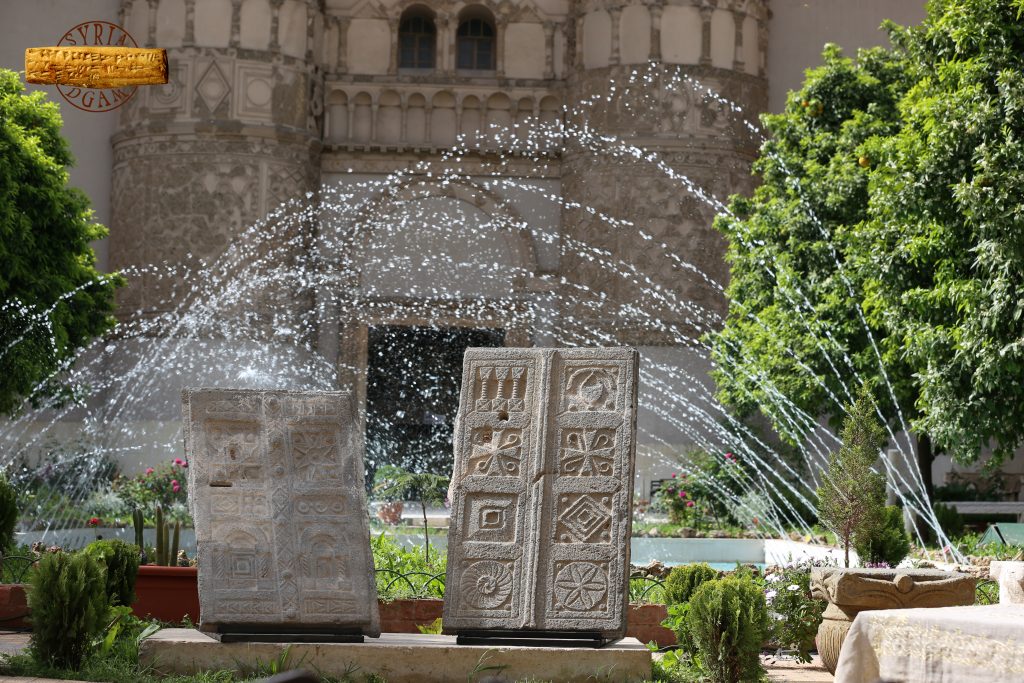1- Location and Construction History
The Syrian National Museum is located at the western entrance of Damascus, between Damascus University and the Sulaymaniyya Takiyya, on Al-Ra’is Bridge, Eastern Qasr Al-Hayr Street. Until the end of World War I, there was no museum in Syria. After the withdrawal of Ottoman forces from Syria, the Diwan of Knowledge was established. One of its departments was tasked with overseeing antiquities and founding a museum to preserve them. A hall in the Adliyya School building in Bab Al-Barid, opposite the Al-Zahiriyya School, was allocated for this purpose. Prominent families in Syria generously donated artifacts to the museum, forming the core collections of the Damascus Museum in 1920.
These collections gradually grew through successive archaeological discoveries. As the old building became insufficient, it was decided to construct a new museum. The Directorate of Endowments in Damascus donated land in Al-Marj Al-Akhdar for this purpose. The new museum building was inaugurated in 1936, designed by the French architect Écochard.
The new building’s design allowed for future expansion. Initially, it included a main hall, two galleries, four exhibition rooms, an office wing, and an upper floor with three additional rooms. The museum continued to expand over time until it reached its current layout.
2- Museum Sections
The museum consists of five main sections, established in different phases:
Modern Art (1956)
Prehistoric Syrian Antiquities (1994)
Syrian Antiquities from Historical Periods (1952)
Classical Syrian Antiquities (1936)
Syrian Islamic Antiquities (1950)
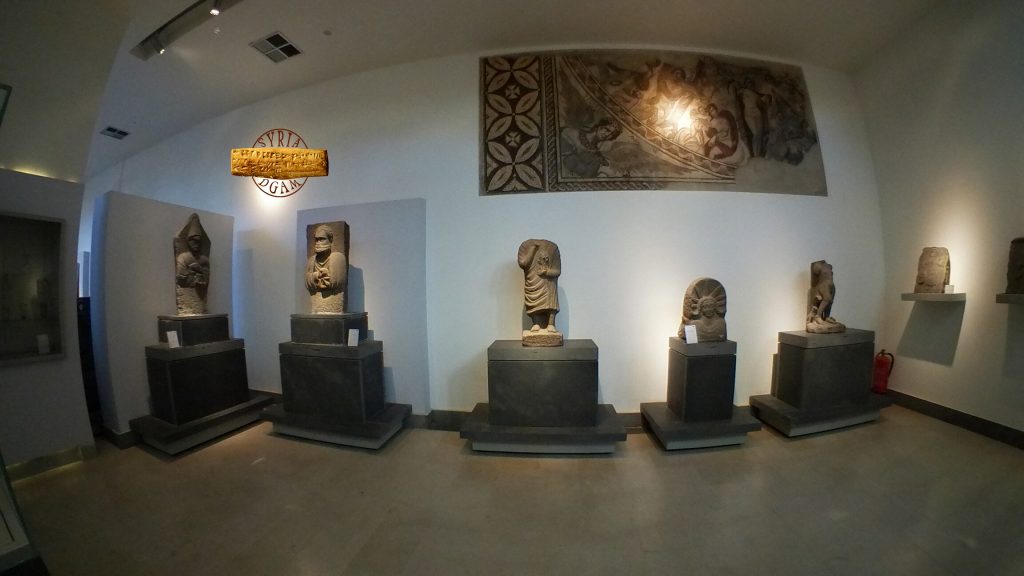
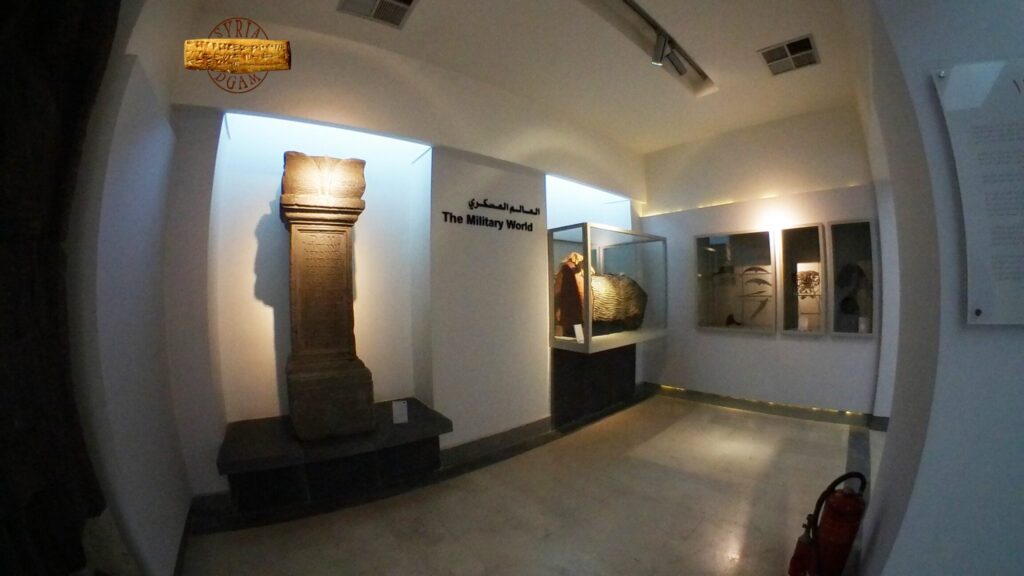
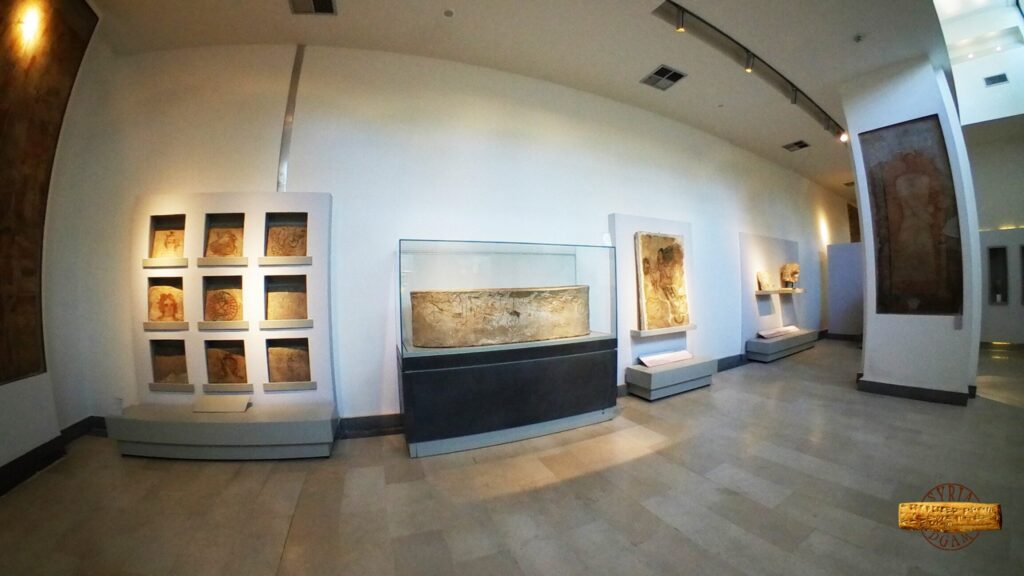
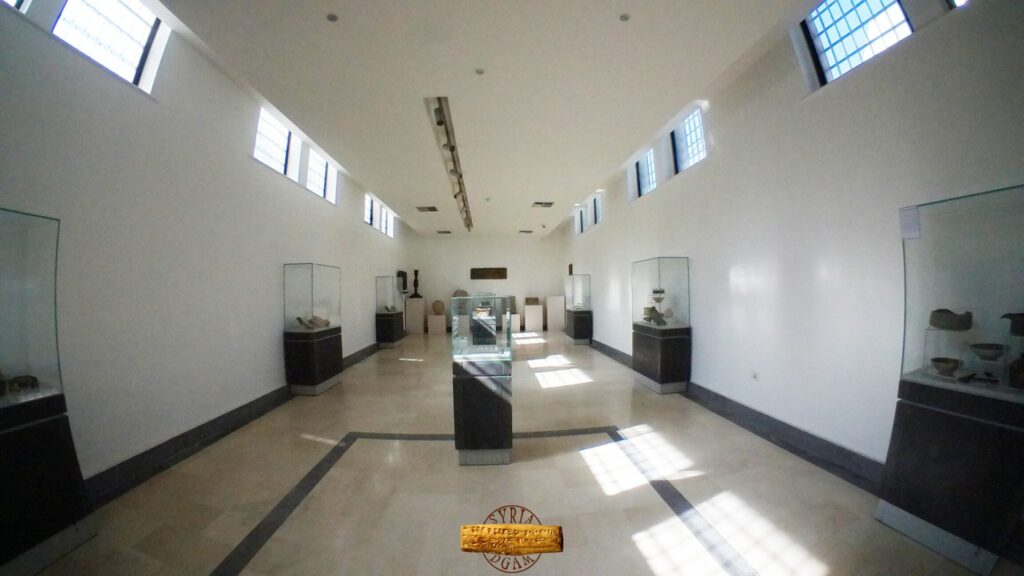
3- Museum Garden
The museum garden serves as an open-air museum. It displays a collection of statues, stelae, doors, windows, mosaic panels, column capitals, sarcophagi, and several large, exquisite sculptures. These artifacts are distributed throughout the garden among flowers and trees. They are made from durable materials such as basalt to withstand natural elements and ensure their preservation.
The museum also houses a valuable library specialized in archaeological and historical books, as well as a visitor’s lounge (cafeteria) for tourists.
4- Prehistoric Syrian Antiquities Section
Located on the third floor, this section exhibits a large number of important stone and bone artifacts, along with dolls, statues, jewelry, pottery, and other items. These pieces span various periods of prehistory, from the Paleolithic to the Chalcolithic era, and originate from major Syrian sites such as Tell Aswad, Tell Halula, Tell Ramad, Jarf al-Ahmar, Tell Al-Abbar, and Baz Jba’een.
Key artifacts include:
- Neanderthal Child Skeleton: Almost complete, from the Dudariya Cave in the Afrin Valley, dating to the Middle Paleolithic.
- Female Doll Representing the Mother Goddess: From Sukar Al-Ahimer, made of unbaked clay. The doll depicts the seated goddess, with a finely crafted head and intricately decorated body. It is relatively large and of high craftsmanship, making it one of the rare examples of Neolithic clay figures.
5- Syrian Antiquities from Historical Periods Section
This section consists of seven halls, organized by archaeological site:
- Two halls for Ugarit discoveries
- Two halls for Mari discoveries
- One hall for Ebla discoveries
- One hall for coastal Syrian sites (e.g., Amrit, Tell Kazel, Ibn Hani)
- One hall for inland Syrian sites (e.g., Tell Khuwairah, Tell Al-Subaybi’).
Notable artifacts include:
- Ugarit Alphabet Tablet: A small clay tablet (5.1 × 3.1 cm) inscribed with 30 letters, representing the first known alphabet.
- Ivory Head: Inlaid with gold, silver, copper, and lapis lazuli, possibly depicting a prince or princess from Ugarit, wearing a tall crown (15 × 9.5 cm).
- Lapis Lazuli Eagle Figure: With a lion-head made of hollow gold sheets, pitch-inlaid eyes, and a tail also of gold sheets, found at Mari, dating to the 3rd millennium BCE (11.8 × 13 cm).
- Ornina (Singer) Statue: Made of beautiful white alabaster, dating to the early 2nd millennium BCE, discovered in the Ishtar Temple at Mari, measuring 25.4 × 13.5 cm.
6- Classical Syrian Antiquities Section
This section showcases Syrian artifacts from Greek, Roman, and Byzantine periods, including stone sculptures, textiles, coins, weapons, jewelry, stelae, tombs, glassware, pottery, and mosaics. The section has been recently renovated.
Key exhibits include:
- Bronze Mask: From the 1st century CE, found in Homs, possibly used to cover the deceased’s face.
- Marble Naos: Discovered in Al-Rastan, carved with a man and his wife (head missing) sitting on a decorated couch, depicting scenes from the Trojan War myth. Made from a single piece of marble, dating to the Roman period.
- Tombstone from Al-Tai Cemetery (Palmyra): Limestone, 2nd century CE, dimensions 55 × 83.4 cm.
The section also includes the Dura-Europos Synagogue (3rd century CE), reconstructed to resemble the original layout. The synagogue exhibits its wall paintings, and features a courtyard surrounded by three colonnades, a clergy section, and a rectangular prayer hall.
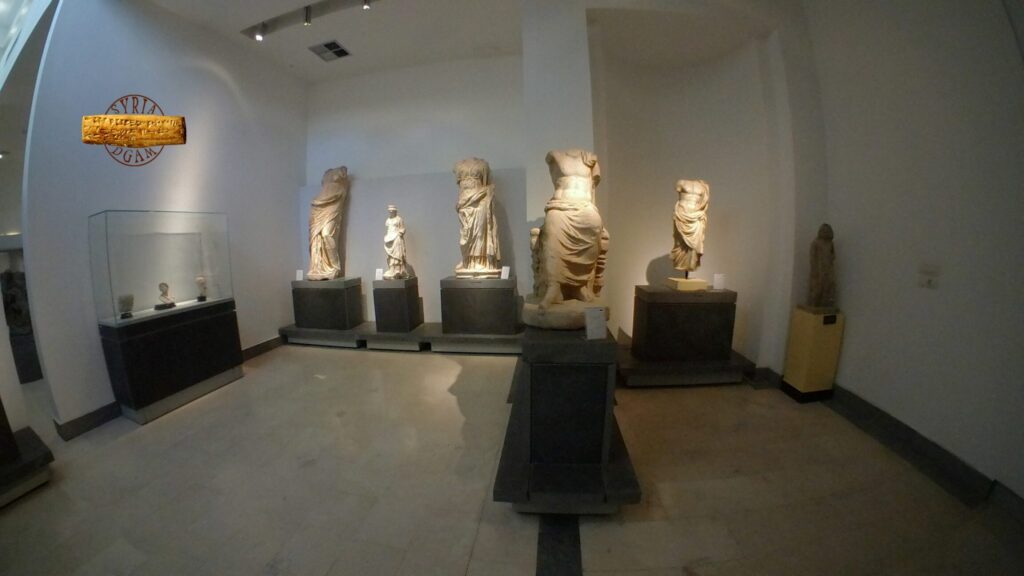
7- Syrian Antiquities in the Islamic Period Section
This section includes:
- Raqqa Antiquities Hall
- Hama Antiquities Hall
- Two arcades and several halls organized by material type: Stone Hall, Ceramics Hall, Pottery Hall, Glass Hall, Manuscripts and Metals Hall, Wood Hall, and the Levant Hall. Some artifacts are also displayed in the museum garden.
Notable exhibits include:
- Ceramic Statue of a Horseman: Featuring Asian facial features, wearing a pointed cap with a long braid hanging behind it. The figure holds a shield in his left hand to fend off a snake, and a broad sword in his right hand raised above his head. Found in Raqqa, dating to the 12th century CE.
- Facade and Artifacts of Al-Hayr Al-Gharbi Palace: Located in the Syrian Desert southwest of Palmyra, about 80 km away. The facade and artifacts were transferred and reconstructed in the museum.
- Levant Hall (Al-Qaa’ah Al-Shamiya): Dedicated to lectures and official receptions. Originally part of the residence of the late Prime Minister of Syria, Jamil Mardam Bey, who donated it to the National Museum in 1958. Dating back to 1150 CE, the hall is adorned with carved and painted wood featuring intricate geometric, floral, and calligraphic designs. Marble, alabaster, and stone were used as decorative elements on the walls, representing 18th-century artistic trends.
